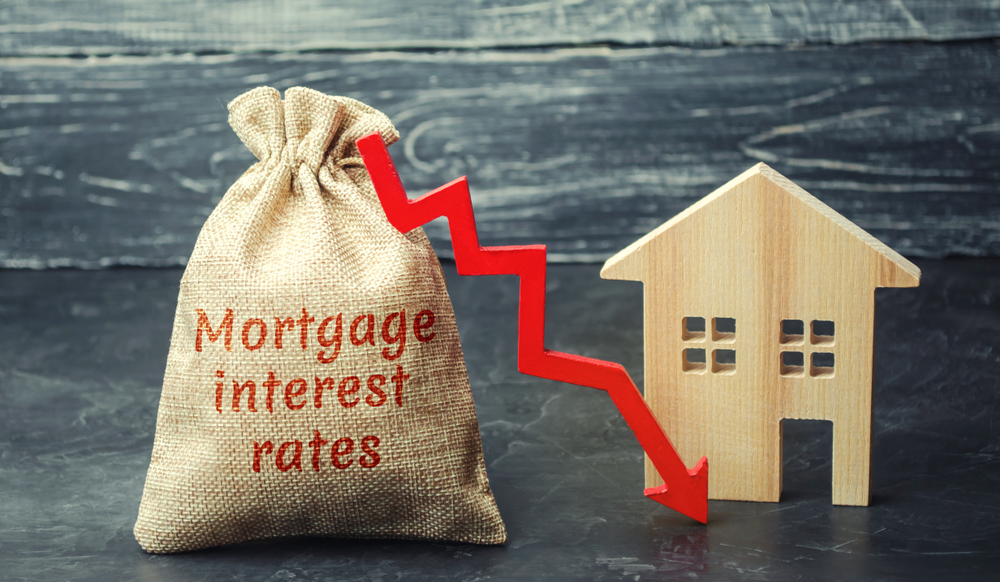
There’s no doubt it’s been a tough year for many.
Soaring inflation continuing on from the 2022 peak of 11.1% which followed the disastrous mini budget and then remained higher than anyone had hoped; and a Bank of England Base Rate steadily climbing to a new heady height of 5.25% in an attempt to bring cost increases in check, which is now reflected in higher market mortgage rates. Record high prices of energy, fuel and essential shopping, and income tax bands frozen until 2028, mean pockets continue to be squeezed.
However, there are positive signs emerging. These signs include a growing consensus that the Bank of England Base Rate has peaked at 5.25%, while inflation has come down faster than predicted and now sits at 4.6%, albeit still far higher than the Government’s 2% target.
As a result of these things, the benefits of higher interest rates for those with savings and average wage growth this year of 7%, there are signs from recent GFK research that consumer sentiment is improving around both the economy at large and household finances. UK Finance data also suggests that consumer spending remains resilient, possibly driven by the residual COVID savings many people are sitting on, and with the impact of higher mortgage interest rates delayed for many.
What can we expect in 2024
Honestly, we should probably all be realistic in our expectations and it’s likely to be another tough 12 months on a number of fronts.
While inflation, now at 4.6%, has fallen faster than the market expected and achieved the Government’s stated aim to reduce it by half during the course of this year, the fact it is falling more slowly than needed means we can expect higher rates for longer, as the powers-that-be push hard to get this key index down to their more normal 2% target. In light of this, the markets are currently expecting that the Bank of England may start to gradually reduce its base rate between June and August next year if continued positive progress is made. However, none of us should expect a return to the historically low level we’ve become used to over the past decade-and-a-half, which helped maintain mortgage interest rates starting with a 1.
While falling inflation is a step in the right direction, costs are going to continue to bite too. Although energy prices, a key influencer of inflation, have eased since regulator Ofgem reduced its price cap to 7%, they remain unusually high, keeping household bills running hot, and there is always the potential that any escalation of the conflicts in the Middle East and Ukraine could create further volatility and send them spiralling again.
Core inflation – centred on basic goods and services – is still above 5%, meaning we all continue paying a premium for everyday things. And, at the same time, tax bands frozen until 2028 are dampening the wage gains we’ve seen this year.
A lot also depends on how resilient the economy proves to be amidst the higher-interest-rate environment. Factors to watch include whether unemployment rises sharply. The growth and productivity the economy relies on for its buoyancy is impacted by higher interest rates and therefore the Government faces a delicate balancing act. If growth, described as gross domestic product, or GDP, falls below 0%, that could mean a recession, which is obviously not good news, and if action isn’t taken soon to kickstart growth again, this could become an even bigger long-term concern than inflation. The prospects surrounding this are looking up a little – while the OBR expected the UK to enter recession in 2024, its more recent figures, released with the Autumn Statement, suggest a modest uptick in growth of between zero and half a per cent which, while not great historically, would at least represent a step in the right direction. All-in-all, we’re likely to be entering a period of stagflation – high inflation and low growth – spanning at least the next couple of years.
House prices haven’t fallen as dramatically as some pundits were predicting. Of the main national indices, Nationwide and Halifax have both pegged the reductions at 3% year-on-year, while the Office for National Statistics (ONS) has them about flat.
We expect prices to end this year and next between 2% and 4% down, before starting to rise modestly again in 2025. It’s important to see these reductions in the context of the significant post-COVID increases of 20%, for a balanced picture.
So, what should we all expect?
Hopefully, we’re entering a much less volatile period where there shouldn’t be any more dramatic swings up or down, but borrowers can’t expect a sudden turnaround which will make them feel lots better off in the near-term.
Of course, the Government’s 2% reduction in national insurance, announced in the Autumn Statement, is a nice sweetener, although in reality people’s tax bills are still growing as a percentage of their earnings, with the frozen income tax thresholds representing a real and growing issue for many – particularly the record number of professional workers like nurses and teachers who are being pulled into the higher-rate bracket, meaning their real income is actually falling, despite this year’s wage rises.
And then, of course, because the personal savings allowance has also been frozen, those who have consistently saved over the years are facing a double whammy, through tax on any earnings from the cash they’ve squirreled away.
The really big unknown surrounds the general election which is likely to take place during the course of 2024 – with question marks over who will win and what kind of fiscal policies will accompany both the race to power and any ultimate change in government.
What is certain is that, with affordability harder to prove in a higher-interest-rate, higher-cost environment, consumers will need to maintain a tight grip on their budgets, making sensible spending choices and saving where they can, to put them in the best possible position when it comes to achieving their mortgage goals.
While this might not be what they want to hear, such positive financial choices help ensure that, when things do eventually bounce back – and they will – they will come back stronger, too.
And of course, there are silver linings. Despite the squeeze resulting from the frozen PSA, the potential to earn 5% on savings is good news for many. Albeit they may have to look at doing different things with them for greater tax efficiency, such as placing them in ISA accounts or attaching them to their mortgage via an Offset product.
The reality is we all need to accept that interest rates are higher now and likely to remain that way, which will mean a shock to everyone with a mortgage, eventually, as they come off their long-term, low- fixed rate deals. However, it’s not all doom and gloom. It is likely that households will need to continue making the kinds of prudent financial choices highlighted in Yorkshire Building Society’s Home Truths mortgage research report, like putting off holidays and other large purchases, and even delaying things like weddings and starting a family, in the short term.
However, lenders like ourselves are also doing what we can to ease the burden, through innovative products aimed at making it easier to prove affordability, options that pay higher cashback to help first-time buyers with their costs and a flexible, individual approach to underwriting. And the advice offered by the broker community is more valuable than ever.
So, if we all keep pulling in the same direction, and focus on sound, old-fashioned good money management, hopefully when things come back around again, we can all enjoy the fruits of our labour.
Jeremy Duncombe is managing director of Accord Mortgages



